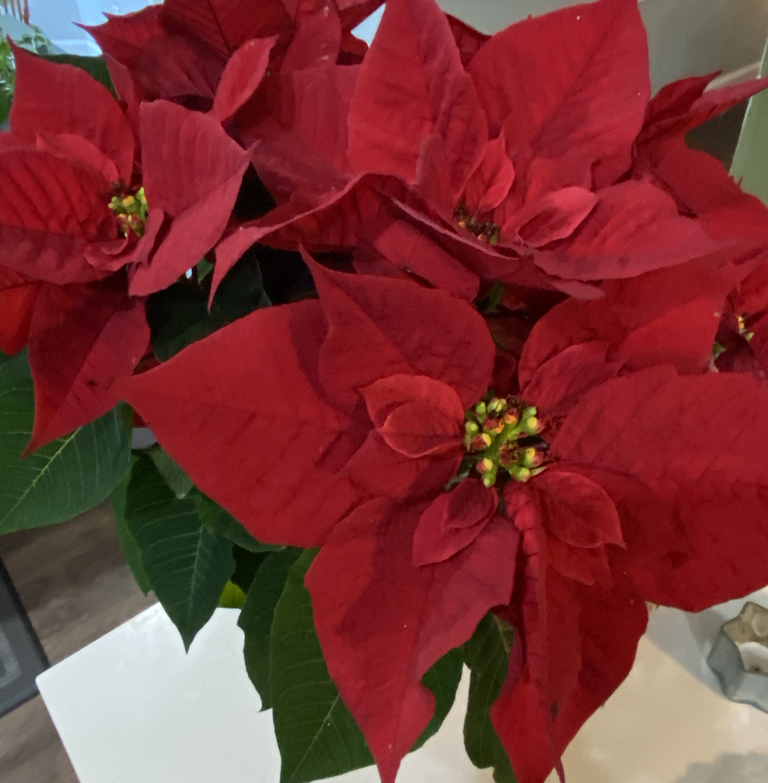Poinsettias are a very common site during the Christmas holidays. You can find them in a wide range of colors from reds, pinks, marbles, and whites. With proper care, poinsettias will provide color and beauty for several weeks during the holidays.
The poinsettia is a small tree and is native to the tropical area of Mexico and Central America. Poinsettias were first introduced to the United States in 1825 by Joel Poinsett who was the first United States ambassador to Mexico.
Keeping a poinsettia looking attractive during as the holidays begins with good selection at the store. Choose poinsettias in full color with fully expanded bracts. Bracts are the colorful leaves of the poinsettia (the true flowers are the small yellow ones in the middle). The poinsettia you select should have dense foliage about twice as larger as the size of the pot. Check to make sure the poinsettia has strong, stiff stems that are not broken. Do not purchase a poinsettia that shows sign of wilt.
After getting home with your poinsettia there are some things you can do to keep poinsettias looking good. Place your poinsettia in the sunniest location of a room. Avoid placing the poinsettia near cold drafts or near things like radiators, televisions, and heating ducts that could generate excess heat. Water plants thoroughly when the soil completely dries out.
If the poinsettia has a foil wrapper make sure the wrapper is not preventing water from draining freely to avoid drowning the plant. You can either remove the foil or punch holes in the bottom of the wrapper and set the plant on a container to catch excess water. Poinsettias are best at temperatures below 70° but above 50°. If you are keeping the poinsettia for a few months, fertilize twice a month with a 20-10-20 soluble fertilizer.
Some people make an attempt to keep poinsettias over until next year. This can be done but it does take some time and patience. After the chance of frost passes in the spring, cut back stems to 3 to 4 inches to promote new growth and repot into a larger container. Place outdoors in semi-sunny location for two weeks to acclimate and then move to full sun. Fertilize the poinsettia with a complete fertilizer every two weeks.
When night temperatures drop to or below 50° in the fall, bring the poinsettia back inside. Flowering of a poinsettia depends on the plant having a long enough dark period. Place your poinsettia in pitch black dark from 5pm to 8 am without interrupting this dark period with any light. Doing this from around the end of September to Thanksgiving will cause the poinsettia to change colors.
It is often asked as to whether poinsettias are poisonous. Poinsettias are not poisonous, but it is recommended to not eat them. Some who are sensitive may experience minor eye and skin irritations if they come into contact with the milky, white sap.
Poinsettias are a great plant for brightening up our homes, churches, and businesses during the holidays. Now knowing a little about the care of poinsettias will keep them looking beautiful through the holiday season.
Jessica Strickland is an Agriculture Extension Agent, specializing in horticulture for North Carolina Cooperative Extension in Wayne County.


